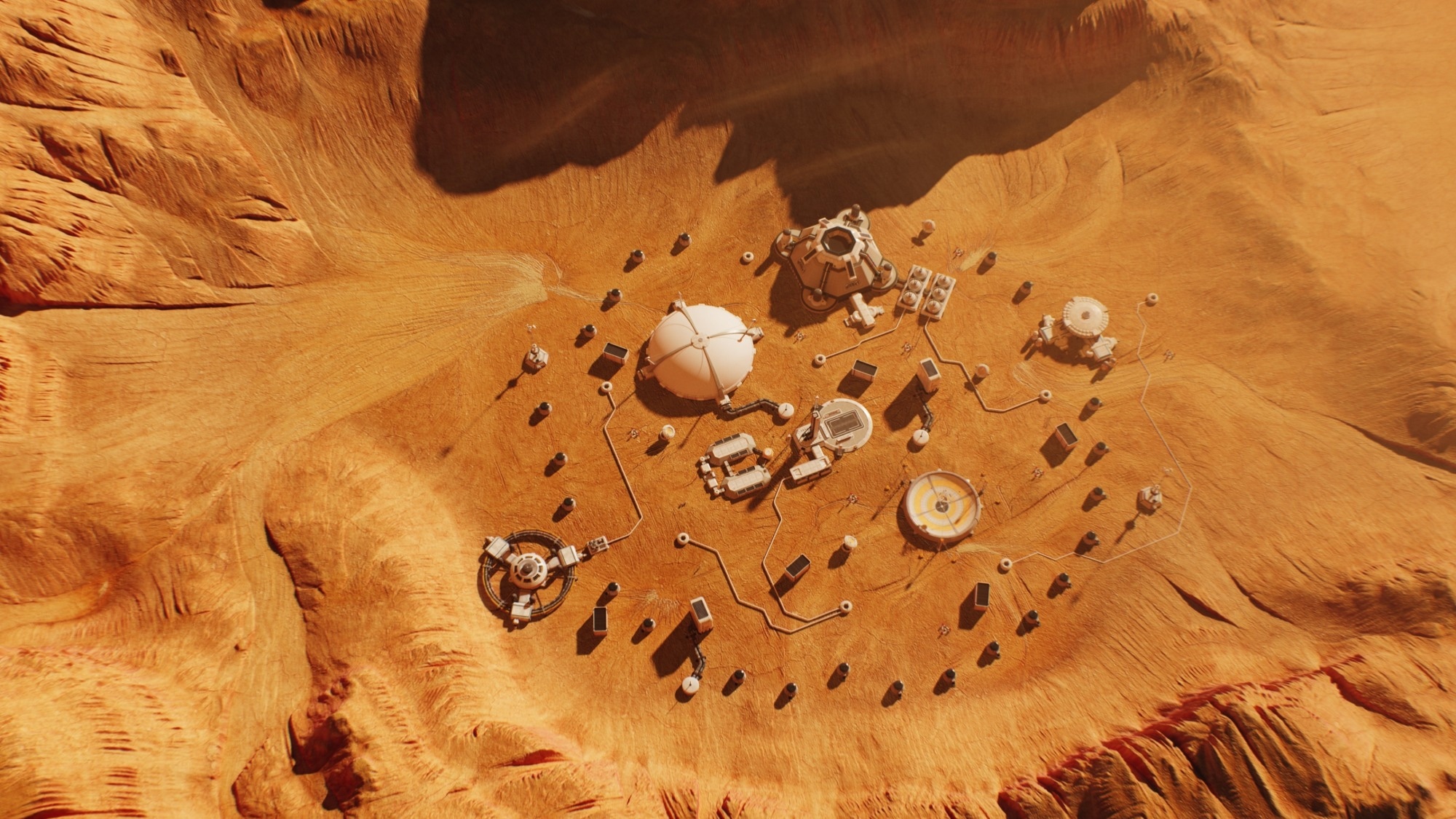Printable bio-composites could let future astronauts build homes with soil and spirulina, according to a recent study in npj Microgravity.
 Image Credit: Frame Stock Footage/Shutterstock.com
Image Credit: Frame Stock Footage/Shutterstock.com
In the paper, researchers explored how construction on Mars could one day rely entirely on local resources. Their solution involves turning Martian regolith, the planet’s loose, rocky soil, into durable, lightweight structures using 3D printing. But instead of relying on high-temperature processes or synthetic binders, they turned to biology, combining regolith simulants with cyanobacterial biomass and a natural crosslinker to create printable materials with promising structural properties.
Why Build with Martian Dirt?
Using additive manufacturing, the team successfully demonstrated that it’s possible to fabricate complex and mechanically stable composites from resources that could feasibly be produced or extracted on Mars. The key to their research is a blend of locally sourced soil simulants, powdered Spirulina (a type of cyanobacteria), and genipin, a naturally occurring compound that helps bind the mix into a solid, water-resistant material.
Shipping building materials to Mars is prohibitively expensive, so space agencies and researchers are looking at ways to use what’s already there. Namely, regolith, the rocky soil covering the Martian surface.
But regolith alone doesn’t hold together well: Previous efforts to use regolith for construction on both the Moon and Mars have faced severe energy demands from sintering, and have also been limited by the mechanical cohesion of unprocessed regolith.
By turning to 3D printing, specifically DIW, the research team aimed to overcome these constraints with a low-energy approach that extrudes viscous inks layer by layer.
Biological components such as Spirulina offer additional benefits, improving the ink's flow and mechanical behavior and aligning with life-support systems already under consideration for Mars, where cyanobacteria could be cultivated in closed-loop habitats.
The Algae-Soil Printing Process
The study involved a series of material formulations combining Martian regolith simulants, R90 and R200, that were chosen for their specific micrometer-scale particle sizes, with Spirulina biomass and genipin as the crosslinking agent. Genipin is critical in the printing process. In solution, it reacts with amino groups in the biomass to form covalent bonds, enhancing both structural stability and resistance to water degradation.
The team prepared the printable "ink" using high-shear mixing to disperse the regolith, biomass, and genipin into a water-based medium. These mixtures were then rheologically tested to ensure they met the requirements for DIW. The ink needs to have a shear-thinning, non-Newtonian flow behavior that allows it to be extruded cleanly while holding its shape after deposition.
The printed prototypes took the form of open lattice structures, allowing the team to evaluate shape fidelity, porosity, and mechanical stability. Once printed, the samples were dried and subjected to thermal and structural analysis.
Thermogravimetric analysis helped determine water content, decomposition temperatures, and overall thermal stability. Surface area and porosity were measured using nitrogen adsorption, while mechanical performance was assessed through compressive strength testing.
Download your PDF now!
Regolithic Printing Results
Structural analysis showed that incorporating Spirulina biomass into the regolith inks significantly enhanced their printability, with improved cohesion and flow characteristics ideal for DIW. Crosslinking with genipin further increased the structural integrity of the printed objects, as the formation of stable covalent bonds between the organic and inorganic components reduced water sensitivity and improved load-bearing capacity.
Mechanically, the printed structures held up well under compressive loads, reaching strengths in the range of several megapascals, sufficient for certain structural applications in reduced gravity environments.
The final composites were lightweight and porous, with porosity influenced by both the particle size of the regolith simulants and the degree of crosslinking achieved. Thermogravimetric analysis revealed that the biomass decomposed at around 500°C, leaving mostly inorganic regolith residues behind.
The materials exhibited relatively low surface area and moderate mesoporosity, which is indicative of some internal moisture retention, typical of partially hydrated biological components.
The Future of Spirulina Cement
This study highlights the potential of bio-regolith composites as a sustainable, energy-efficient solution for extraterrestrial construction. The organic matrix improves cohesion between regolith particles, but using naturally derived crosslinkers like genipin also provides a non-toxic, low-resource path to increased mechanical stability.
They do note that further work is needed to assess long-term durability under Martian conditions, including exposure to temperature extremes, radiation, and low atmospheric pressure. In addition, the overall efficiency of the process, particularly concerning water use and biomass cultivation, still needs improving. Scaling this approach to support full-scale habitat construction will require careful integration with life-support and recycling systems to ensure resource sustainability.
Altogether, the findings support a growing interest in biologically integrated manufacturing for space exploration, where local materials, microbial systems, and additive manufacturing can combine to reduce Earth dependence. If future missions can cultivate their own binders from algae and print structures with local dust, Mars could become a far more buildable place than previously imagined.
Want to learn more about 3D printing? Learn about powder based additive manufacturing here!
Journal Reference
Mannes Guesser De Oliveira, S., et al. (2025). 3D printing of composites of Martian regolith simulants and cyanobacterial biomass towards sustainable material production on Mars. npj Microgravity 11, 60. DOI: 10.1038/s41526-025-00521-9, https://www.nature.com/articles/s41526-025-00521-9